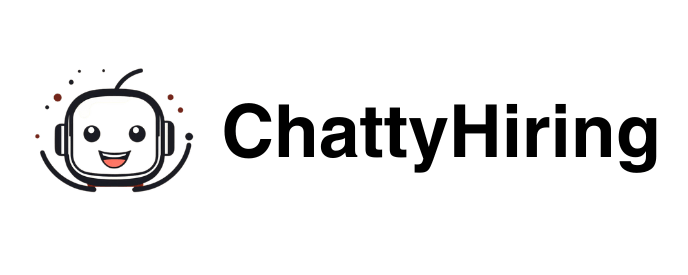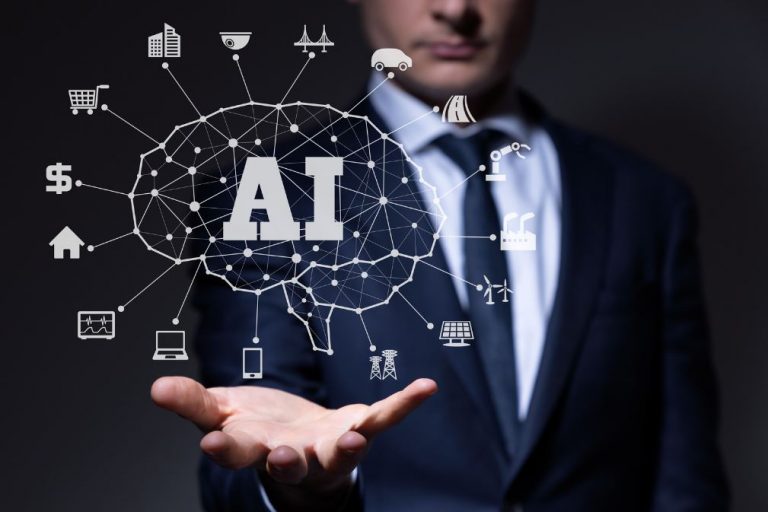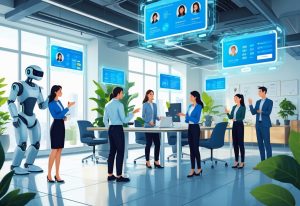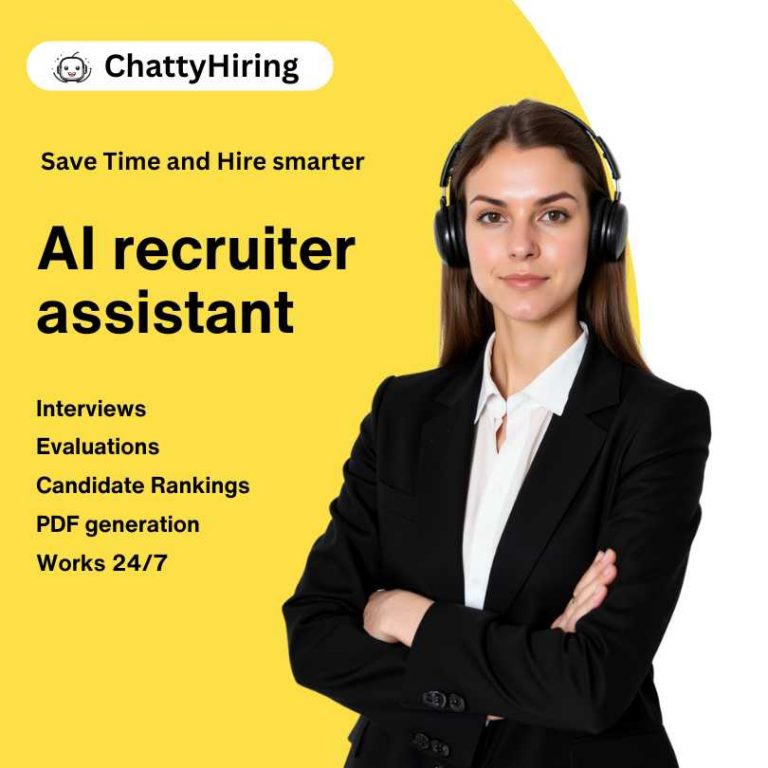The integration of artificial intelligence (AI) into the hiring process has transformed the landscape of recruitment in recent years. As organizations strive to enhance efficiency and effectiveness in their talent acquisition strategies, AI technologies have emerged as powerful tools that can analyze vast amounts of data, identify patterns, and make predictions about candidate suitability. This shift is not merely a trend; it reflects a fundamental change in how companies approach hiring, moving from traditional methods to data-driven decision-making.
The rise of AI in hiring is driven by the need for speed and accuracy in a competitive job market, where the demand for top talent often outstrips supply. Moreover, the adoption of AI in hiring is fueled by advancements in machine learning and natural language processing. These technologies enable AI systems to understand and interpret human language, allowing them to parse job descriptions, resumes, and other relevant documents with remarkable precision.
Companies are increasingly leveraging AI to sift through thousands of applications, identifying the most qualified candidates based on specific criteria.
This not only reduces the time spent on manual screening but also minimizes the risk of human error, ensuring that hiring decisions are based on objective data rather than subjective biases.
Key Takeaways
- AI is increasingly being used in the hiring process to streamline and improve efficiency.
- Traditional job descriptions often have limitations in accurately representing the role and attracting diverse candidates.
- AI-generated job descriptions can be more inclusive, unbiased, and targeted, leading to a more diverse pool of candidates.
- AI can help improve diversity and inclusion in hiring by removing biased language and identifying potential areas of improvement.
- AI plays a crucial role in streamlining the hiring process by automating tasks such as job description generation, candidate screening, and interview scheduling.
The limitations of traditional Job Descriptions
Traditional job descriptions have long been the cornerstone of recruitment strategies, serving as a primary tool for communicating the requirements and expectations of a role. However, these descriptions often suffer from several limitations that can hinder the effectiveness of the hiring process. One significant issue is that they tend to be overly generic, failing to capture the unique nuances of a position or the specific skills required for success.
This lack of specificity can lead to misunderstandings between employers and candidates, resulting in misaligned expectations and potentially costly hiring mistakes. Additionally, traditional job descriptions often reflect outdated language and criteria that may inadvertently exclude qualified candidates. For instance, phrases like “rockstar” or “ninja” can create barriers for individuals who may possess the necessary skills but do not identify with such terminology.
Furthermore, traditional descriptions may emphasize qualifications that are not essential for the role, perpetuating a cycle where only a narrow pool of candidates feels encouraged to apply. This not only limits diversity but also restricts organizations from tapping into a broader talent pool that could bring fresh perspectives and innovative ideas.
The Benefits of AI-Generated Job Descriptions

AI-generated job descriptions offer a compelling alternative to traditional methods, addressing many of the limitations inherent in conventional approaches. One of the primary advantages is the ability to create highly tailored descriptions that accurately reflect the specific needs of a role. By analyzing data from successful hires within an organization or industry benchmarks, AI can generate job descriptions that highlight the most relevant skills and experiences required for success.
This level of customization ensures that candidates have a clear understanding of what is expected, ultimately leading to better alignment between applicants and employers. Furthermore, AI can enhance the inclusivity of job descriptions by using language that appeals to a diverse range of candidates. By analyzing linguistic patterns and identifying terms that may be off-putting to certain demographics, AI can suggest alternatives that foster a more welcoming environment.
For example, replacing gendered language or jargon with more neutral terms can help attract a wider array of applicants. This not only broadens the talent pool but also signals to potential candidates that an organization values diversity and is committed to creating an inclusive workplace.
How AI Can Improve Diversity and Inclusion in Hiring
The potential for AI to improve diversity and inclusion in hiring is one of its most significant contributions to modern recruitment practices. Traditional hiring processes often suffer from unconscious biases that can lead to homogenous workforces. AI has the capability to mitigate these biases by focusing on objective data rather than subjective impressions.
| Metrics | Data |
|---|---|
| Gender Diversity | Percentage of male, female, and non-binary candidates hired |
| Ethnic Diversity | Percentage of candidates from different ethnic backgrounds hired |
| Interview Success Rate | Percentage of diverse candidates who successfully pass the interview stage |
| Retention Rate | Percentage of diverse hires who stay with the company long-term |
| Employee Satisfaction | Survey results on diversity and inclusion from employees |
For instance, AI algorithms can analyze candidate qualifications without being influenced by factors such as gender, ethnicity, or age, thereby promoting a more equitable selection process. Moreover, AI can assist organizations in identifying and addressing systemic barriers that may hinder diversity efforts.
By analyzing historical hiring data, AI can uncover patterns that reveal disparities in candidate selection and retention rates among different demographic groups.
This insight allows organizations to implement targeted strategies aimed at improving diversity within their workforce. For example, if data indicates that certain groups are underrepresented in specific roles, companies can adjust their outreach efforts or refine their job descriptions to better attract those candidates.
The Role of AI in Streamlining the Hiring Process
AI plays a crucial role in streamlining the hiring process by automating repetitive tasks and enhancing overall efficiency. One of the most time-consuming aspects of recruitment is the initial screening of resumes, which often involves sifting through hundreds or even thousands of applications. AI-powered tools can quickly analyze resumes against predefined criteria, identifying top candidates based on their qualifications and experiences.
This automation not only saves time for HR professionals but also allows them to focus on more strategic aspects of recruitment, such as engaging with candidates and building relationships. In addition to resume screening, AI can facilitate scheduling interviews and managing communication with candidates. Chatbots powered by AI can handle routine inquiries from applicants, providing them with timely information about their application status or answering common questions about the hiring process.
This level of automation enhances the candidate experience by ensuring that applicants feel informed and valued throughout their journey. By streamlining these processes, organizations can reduce time-to-hire and improve overall efficiency while maintaining a positive candidate experience.
Addressing Bias in Job Descriptions with AI
One of the critical challenges in recruitment is addressing bias in job descriptions, which can inadvertently deter qualified candidates from applying. AI has emerged as a valuable ally in this endeavor by providing tools that analyze job descriptions for biased language and suggest alternatives that promote inclusivity. For instance, AI algorithms can identify terms that may be perceived as gendered or exclusionary and recommend more neutral phrasing that appeals to a broader audience.

Furthermore, AI can help organizations assess their job descriptions against industry standards and best practices. By comparing language and requirements with those used by successful companies in similar fields, AI can provide insights into how to craft more effective and inclusive job postings. This proactive approach not only enhances the quality of job descriptions but also signals to potential candidates that an organization is committed to fostering an equitable hiring process.
The Future of AI-Generated Job Descriptions
As technology continues to evolve, the future of AI-generated job descriptions holds immense promise for enhancing recruitment practices further. One potential development is the increased use of predictive analytics to forecast candidate success based on historical data. By analyzing past hires’ performance metrics alongside job description elements, AI could refine its recommendations for future postings, ensuring that organizations attract candidates who are not only qualified but also likely to thrive within their unique corporate culture.
Additionally, as organizations become more adept at leveraging AI tools, there may be a shift toward dynamic job descriptions that evolve over time based on real-time feedback from employees and market trends. This adaptability would allow companies to remain agile in their hiring practices, ensuring they are always aligned with current industry demands and workforce expectations. Such innovations could lead to more effective recruitment strategies that prioritize both candidate fit and organizational needs.
Best Practices for Implementing AI in Job Description Generation
To maximize the benefits of AI in generating job descriptions, organizations should adhere to several best practices during implementation. First and foremost, it is essential to ensure that the data used to train AI models is diverse and representative of various demographics. This step is crucial for minimizing bias in AI-generated outputs and ensuring that job descriptions appeal to a wide range of candidates.
Additionally, organizations should involve key stakeholders—such as HR professionals, hiring managers, and diversity officers—in the development process. By collaborating with these individuals, companies can ensure that AI-generated job descriptions align with organizational values and goals while addressing specific needs within different departments. Regularly reviewing and updating job descriptions based on feedback from employees and candidates will also help maintain relevance and inclusivity over time.
Finally, organizations should prioritize transparency when using AI tools in recruitment processes. Clearly communicating how AI is utilized in generating job descriptions and making hiring decisions fosters trust among candidates and employees alike. By embracing these best practices, companies can effectively harness the power of AI while promoting fairness and inclusivity in their hiring processes.
If you’re interested in learning more about how AI is revolutionizing the recruitment process, check out this article on The Secret of AI Interviews for HR. This article delves into how AI can streamline the interview process and help HR professionals find the best candidates for the job. Additionally, if you want to maximize efficiency in your recruitment efforts, be sure to read Maximizing Efficiency in Recruitment. This article provides valuable insights on how AI can help recruiters save time and resources. And for some top strategic interview questions to ask candidates, take a look at Top Strategic Interview Questions for Candidates.
FAQs
What is an AI-generated job description?
An AI-generated job description is a job description that has been created using artificial intelligence technology. This technology uses algorithms and natural language processing to analyze and generate job descriptions based on specific criteria and requirements.
How does AI generate job descriptions?
AI generates job descriptions by analyzing large amounts of data from various sources, such as job postings, resumes, and industry-specific information. It then uses natural language processing to understand and interpret this data, and generates a job description that matches the desired criteria and requirements.
What are the benefits of using AI-generated job descriptions?
Some benefits of using AI-generated job descriptions include saving time and effort in creating job descriptions, ensuring consistency and accuracy in the language and content, and tailoring the descriptions to specific roles and industries based on data analysis.
Are there any limitations to AI-generated job descriptions?
Limitations of AI-generated job descriptions may include the potential for bias in the data used to train the AI, the inability to capture nuanced or subjective aspects of a job, and the need for human oversight to ensure the job description accurately reflects the company’s culture and values.
How can AI-generated job descriptions be used in the hiring process?
AI-generated job descriptions can be used in the hiring process to quickly create and customize job postings, attract relevant candidates, and streamline the initial stages of recruitment. They can also help to standardize and optimize job descriptions for better search engine optimization and candidate matching.
-

A passionate advocate for the future of HR innovation. With expertise in leveraging AI to revolutionize recruitment processes, Carlos has a clear vision: empower HR teams while creating meaningful candidate experiences.
View all posts





